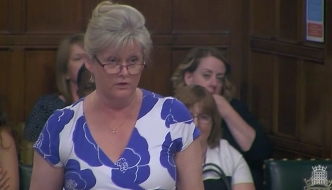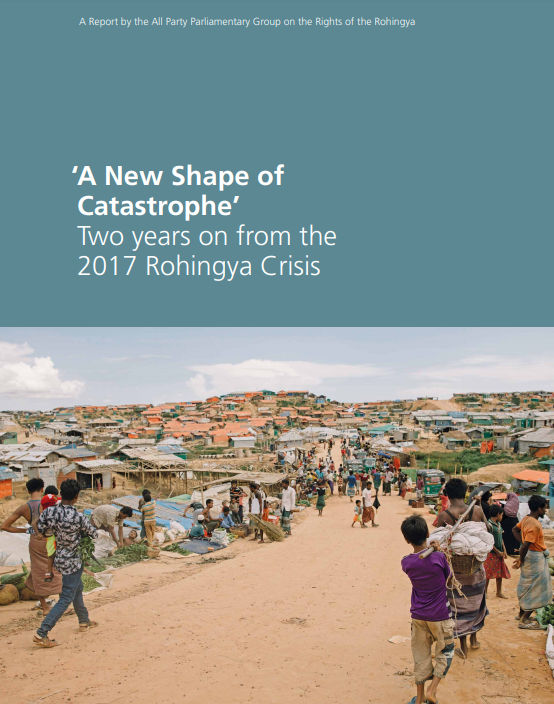Anne Main speaks out on the potential impact of the Monsoon season on the Rohingya refugees in Bangladesh
Anne Main speaks in a debate on the potential impact of the Monsoon season on the Rohingya refugees in Bangladesh and raises serious concerns at the proposals to relocate 100,000 refugees to Bhasan Char island - a shifting sandbank in the Meghna river delta.
It is a delight to serve under your chairmanship, Ms McDonagh.
This is an enormously important debate. We have heard the statistics about the amount of rainfall, so I shall not rehearse them, save that the north-eastern part of Bangladesh receives the greatest average precipitation of some 4,000 mm per year. By the end of the monsoon season, as the Minister knows because he has been there so often, a third of the country is under water. As other right hon. and hon. Members have seen, and as I saw when flying down from Dhaka to Cox’s Bazar in September, the landscape is vast and watery, barely above sea level. Many areas of Bangladesh are treacherous and cut off in the monsoon season, which was absolutely visible. There are already huge pressures on the population as a whole—not just the Rohingya—as a result of global warming and the rains. When those rains come, communities can be accessed only by boat, houses are damaged, crops and livestock are lost and, importantly, the rice harvest is often lost, which impacts the population’s future.
In the pre-monsoon and monsoon seasons, there are access constraints on the mud roads to which the hon. Member for Cardiff Central (Jo Stevens) referred. They become impassable, footpaths become slippery, and earthen stairs and slopes become dangerous and may collapse. Members who have been to the camps will know that they are like something from Mars or the moon, and will have seen the deforestation that has gone on to create mounds of earth. Where hills and mountains were covered in greenery, there are now barren, muddy landscapes with little to hold the soil together. Shelters and facilities will be flooded and damaged, prompting displacement and overcrowding in even more of the camp.
This issue is not new—as the Minister knows, it goes back 20 years—but Rohingya camps have never existed on such a scale, and never before have so many people been confined in such a small, cramped and inhospitable place, so there is no direct experience to indicate how that number of people will survive the monsoon. They have withstood monsoons in the past, but not in such numbers.
When I visited in September, I saw vast deforestation. An elephant rampaged through the camp, killed someone and was shot. People thought that was terrible, but to be fair to the elephants, every single bit of their habitat is gone. As far as the eye could see, the landscape was totally barren and vulnerable to landslips and shelter collapse. We were there for several days, and we actually witnessed 100 small, pitiful homes of the sort the hon. Lady described that had been washed away overnight. I felt utterly guilty to be listening to the heavy rain in my hotel in Cox’s Bazar. As we have all seen, many of the Rohingya in camps do not have shelters at all—some simply shelter under plastic bags and other small pieces of plastic, which they hold over their heads. It is pitiful. After several nights of heavy rain, the gullies that people had been easily fording turned into death traps, and we saw an individual who had drowned while trying to access food for his family being pulled out of a flooded gully.
I am appalled that, to resolve the overcrowding that no doubt exists in the camps, 100,000 individuals from that very camp may be relocated to Bhasan Char island, which the hon. Lady mentioned. That island—a misnomer if ever there was one—is basically a large mudflat. It is a shifting bank of sand that did not even exist 20 years ago. It is not an island but an accumulation of sediment formed by the Meghna river. It changes shape radically. If anyone has not looked at it, it is possible to go online and see its changing contours. Sometimes it is totally submerged under floodwater. It is not a suitable place to create a haven for the Rohingya.
I wrote to the Secretary of State and pointed out that the topography of the island makes it extremely vulnerable to flooding and cyclones, and that it regularly disappears underwater. I also mentioned the increasing concerns about the adequacy of resources such as food, water and additional facilities, and about humanitarian access to the island. I wrote that I am worried that the planned settlement—the media are trying to look at what is going on on Bhasan Char island, but it is being planned in quite a secretive manner—would, in effect, act as a prison camp. It would allow the refugees to be resettled, but I am concerned that the island would not be a safe haven for the Rohingya.
The Minister has stated that the Government have
“concerns that the island may not provide safe accommodation for Rohingya refugees and we have shared these concerns with the Government of Bangladesh.”
Given that building is going on apace, and that plans are going on apace to relocate 100,000 people to Bhasan Char island, I want to know what progress if any has been made with stopping that relocation. A huge amount of building is going on. The designs for the island show that there will be cyclone shelters, which look amazingly like prison blocks. They are absolutely tiny. The Rohingya who are there are already traumatised. I question what the value of those cyclone shelters will be, if they are imprisoned on a featureless mudflat in the bay of Bengal, cut off from the current aid groups that are in the camps on the mainland.
The flooding of contaminated water has already been referred to. Camp sanitation is bleak—I know because I have used it. I am not surprised that there are outbreaks of E. coli and other faecal matter diseases, given the overflowing latrines. We do not know what facilities will be on Bhasan Char island. I would like to know if the Minister plans to visit Bhasan Char island to reassure us.
The UK has just generously pledged £70 million more. That is £129 million pledged on behalf of the British taxpayer. Many of my constituents are fundraising for the Rohingya. I do not think many of them are aware that there is a potential Alcatraz—as I refer to it—in the bay of Bengal. I would like to know whether the British Government plan to visit given the amount of development that has already happened there.
When the International Development Committee visited, we were told that NGOs had identified significant amounts of other land that would be safe for the Rohingya to be put into. Does the hon. Lady agree that the British Government need to use all their powers to get the Bangladeshis to release the land that the aid agencies have identified, and focus less on putting them on to an island?
I accept the hon. Gentleman’s point. We cannot dictate, however, to other countries that have opened their arms and done a very big job in taking nearly 1 million people. Far be it for me to tell the Bangladeshi Government which bits of land they should give away. That would not be appropriate. I do have concerns, however, about the pieces of land that have been identified. To be fair—hon. Members have been there and seen them—other areas are barely above sea level, but the island is particularly vulnerable. With the cyclone coming on, a cyclone shelter just does not cut it.
I would like the Minister to have plenty of time to answer these questions, so I will not carry on much longer. The hon. Lady mentioned the pregnant women in the camp. I am concerned that women and children will be located on this island, many of whom are pregnant as a result of rape by the Burmese militia. We should call that out. I am absolutely appalled that we do not have any formal international recognition of the atrocities that the Burmese army are committing in order to call them out for what they are, which I believe is genocide and war crimes that should be held accountable.
I thank the hon. Member for Cardiff Central for bringing this debate and allowing me to speak in it. The British Government have been enormously generous. The Bangladeshi Government have opened their arms, but they have an election coming up and the Rohingya are not a vote-winning issue, as there are already pressures on the Government to sort out the problem with disease in the camp and some of the unfortunate practices that are being associated with the camp, which the local population are not happy with. My main point is that Bhasan Char island is not an acceptable place to send people who are already traumatised. Following the response I have had from the Government on sharing my concerns, I would like to know that the Minister has asked for a visit.

DISSOLUTION OF PARLIAMENT
Watch: Anne Main, chair of the All Party Parliamentary Group on Bangladesh, talks about the Rohingya crisis and urges support for @DECappeal pic.twitter.com/FFL0lq8O0A
— DFID (@DFID_UK) October 12, 2017

